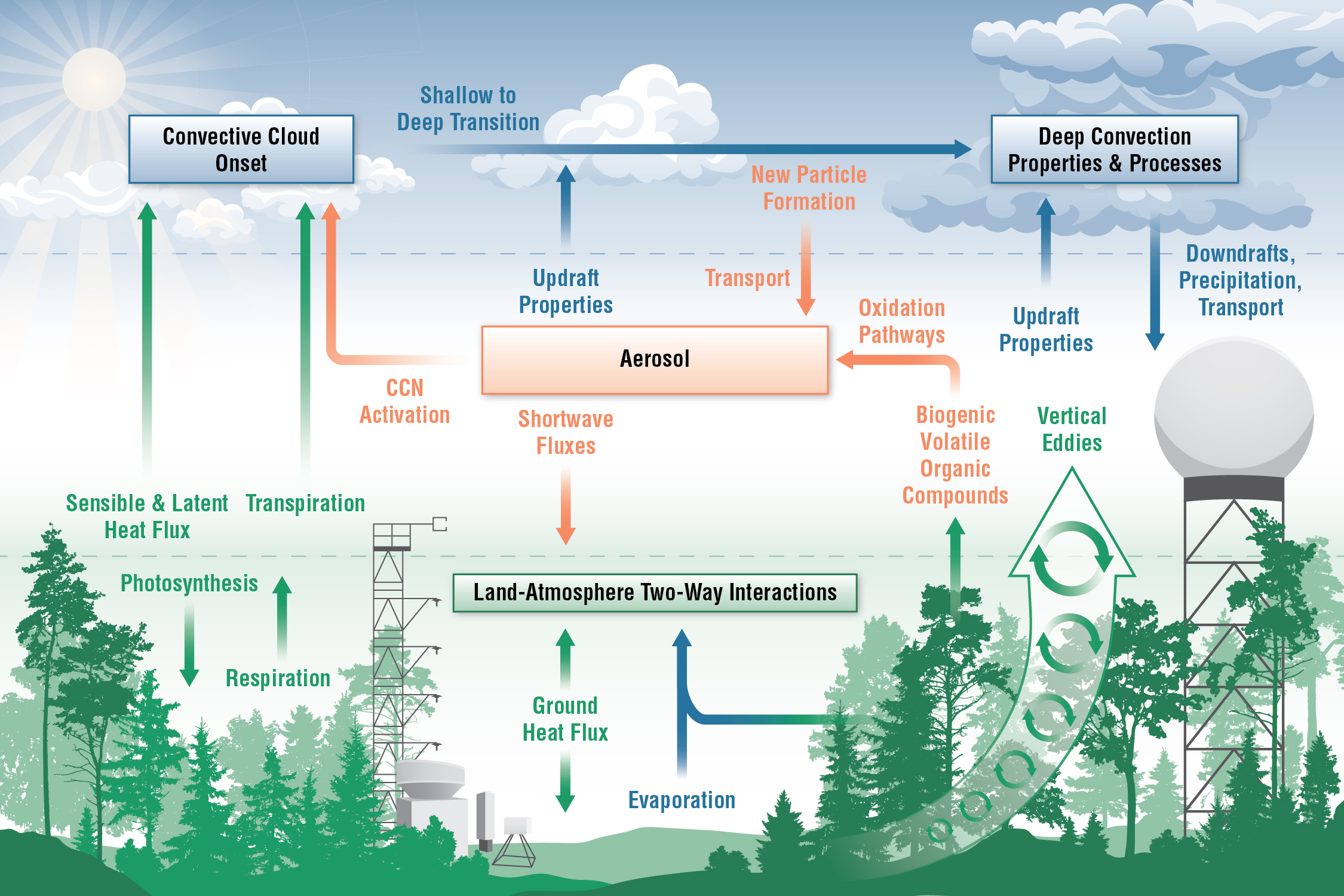AMF3 Site Science Team Blog: Community Outreach Efforts in Full Swing
Published: 25 November 2020
Editor’s note: Chongai Kuang leads the site science team that will develop a science plan and initial research project for the upcoming Southeastern U.S. deployment of the third ARM Mobile Facility (AMF3). Kuang, from Brookhaven National Laboratory in New York, provided the following post.

The AMF3 site science team has been very busy over the past several months, so before the end of the year, I wanted to update you on what we have been doing and what is next.
Shortly after my last blog post, I presented with Dan Feldman, from Lawrence Berkeley National Laboratory, on upcoming ARM Mobile Facility deployments during the virtual Environmental System Science (ESS) Principal Investigators (PI) Meeting in May. Dan is the PI for the Surface Atmosphere Integrated Field Laboratory (SAIL) campaign.
During the virtual ESS meeting, which brought together researchers in the terrestrial ecosystem and subsurface biological sciences, Dan and I introduced ARM as a DOE user facility for atmospheric observations. In the AMF3 portion of the presentation, I provided high-level scientific justification for a deployment to the Southeastern United States (SEUS) and introduced the site science team and our core science drivers.
Getting to the heart of the site science team’s mission, I invited the ESS community to engage with our team and provide targeted feedback. I am happy to share that this has led to a number of follow-up discussions with ESS community members.
Gathering Feedback from the ARM/ASR Community
In June, the AMF3 SEUS deployment had a virtual breakout session as part of the Joint ARM User Facility/Atmospheric System Research (ASR) PI Meeting. More than 200 people attended the session, which we were happy to hear!
The presentation included background on the AMF3 SEUS deployment, the facility itself, and siting considerations for AMF3. Attendees received an introduction to the site science team and then heard a series of talks on SEUS science drivers within the Land-Atmosphere Interactions, Aerosol, and Convective Cloud topical areas. The science driver talks included discussions of opportunities, challenges, and lessons learned within each area.
The session resulted in wide-ranging community feedback on SEUS-relevant science drivers and critical measurements. This feedback is captured in the breakout session report. The session is also available for you to watch on YouTube.
Current Activities
In addition to presenting at PI meetings, we have been holding regular monthly teleconferences with the full site science team, topical subgroups, ARM/ASR program managers, site operations partners from Sandia National Laboratories, and SEUS partners and measurement network representatives.
Our core focus right now is to develop our site shortlist—a selection of smaller areas within the SEUS where we are considering specific deployment locations. Site shortlist development will focus on refining:
- science-instrument traceability matrices (which we are using to organize, consolidate, and communicate instrument priorities);
- science-driven siting considerations; and
- science-driven siting configurations that will best accommodate the interests and needs of the diverse research community interested in the deployment.
AGU and AMS Town Halls

To further inform our decision-making, we are holding virtual town halls for the AMF3 SEUS deployment during the 2020 American Geophysical Union (AGU) Fall Meeting and 2021 American Meteorological Society (AMS) Annual Meeting. Our overarching goal for these town halls is to “plant the seeds” of interest and participation in order to grow the deployment “ecosystem.” The AMF3 SEUS deployment presents an exciting opportunity for cross-cutting science across a broad range of interests.
During the town halls, we will share with you relevant background leading up to the decision for the AMF3 SEUS deployment, science drivers (questions and thematic areas) from our site science plan, and criteria of how we are going about site selection, site configuration, and instrument prioritization.
We look forward to hearing from you at AGU and AMS about how we can best serve research priorities and the needs of the scientific community with the AMF3 SEUS deployment.
Please join us at the AGU town hall from 10–11 a.m. Eastern time Wednesday, December 2. You can read the abstract here.
The AMS town hall is scheduled from 1–2 p.m. Eastern time Thursday, January 14. The abstract is now posted on the AMS page.
If you have feedback before, during, or after AGU and AMS, please don’t hesitate to email the site science team.
Keep up with the Atmospheric Observer
Updates on ARM news, events, and opportunities delivered to your inbox
ARM User Profile
ARM welcomes users from all institutions and nations. A free ARM user account is needed to access ARM data.


















